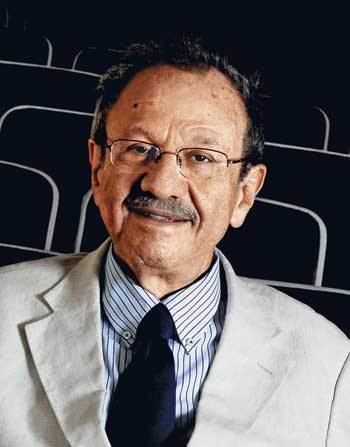Nationality Brazilian Known for Palis conjecture | Name Jacob Palis Role Mathematician | |
 | ||
Institutions Instituto Nacional de Matematica Pura e Aplicada Doctoral students Artur Oscar LopesRicardo ManeWelington de MeloCarlos Gustavo MoreiraEnrique PujalsMarcelo Viana Education University of California, Berkeley (1964–1967), Federal University of Rio de Janeiro (1962) Awards Guggenheim Fellowship for Natural Sciences, Latin America & Caribbean Books Geometric theory of dynamica, Jacob Palis ‑ Selected Works, Hyperbolicity and Sensitive | ||
Jacob palis chaos is it possible to estimate uncertainty mca 2013
Jacob Palis, Jr. (born 15 March 1940) is a Brazilian mathematician and professor. Palis' research interests are mainly dynamical systems and differential equations. Some themes are Global stability and hyperbolicity, bifurcations, attractors and chaotic systems.
Contents
- Jacob palis chaos is it possible to estimate uncertainty mca 2013
- Programa do j matem tico jacob palis 04 07 2011
- Biography
- Awards and honors
- Selected publications
- References

Programa do j matem tico jacob palis 04 07 2011
Biography

Jacob Palis was born in Uberaba, Minas Gerais. His father was a Lebanese immigrant, and his mother was a Syrian immigrant. The couple had eight children (five men and three women), and Jacob was the youngest. His father was a merchant, owner of a large store, and supported and funded the studies of his children. Palis said that he already enjoyed mathematics in his childhood.

At 16, Palis moved to Rio de Janeiro to study engineering at the University of Brazil – now UFRJ. He was approved in first place in the entrance exam, but was not old enough to be accepted; he then had to take the university's entry exam again a year later, at which again he obtained first place. He completed the course in 1962 with honours and receiving the award for the best student.

In 1964, he moved to the United States. In 1966 he obtained his master's degree in mathematics under the guidance of Stephen Smale at the University of California, Berkeley, and in 1968 his Ph.D., with the thesis On Morse-Smale Diffeomorphisms, again with Smale as advisor.
In 1968, he returned to Brazil and became a researcher at the Instituto Nacional de Matemática Pura e Aplicada (IMPA) in Rio de Janeiro, Brazil. Since 1973 he has held a permanent position as professor at IMPA, where he was director from 1993 until 2003. He was Secretary-General of the Third World Academy of Sciences from 2004 to 2006, and elected its President in 2006 and remained on position till December 2012. He was also president of the International Mathematical Union from 1999 to 2002. He is the current president of Brazilian Academy of Sciences since 2007. Palis has advised more than forty Ph.D. students so far from more than ten countries.
Awards and honors
Palis has received numerous medals and decoration. He is a foreign member of several academies of sciences, including the United States National Academy of Sciences and the French Academy of Sciences. In 2005 Palis was selected a member of the Legion of Honor.
He is a member of the Norwegian Academy of Science and Letters. In 2010 he was awarded the Balzan Prize for his fundamental contributions in the mathematical theory of dynamical systems that has been the basis for many applications in various scientific disciplines, such as in the study of oscillations. He is also a recipient of the 1988 TWAS Prize.
